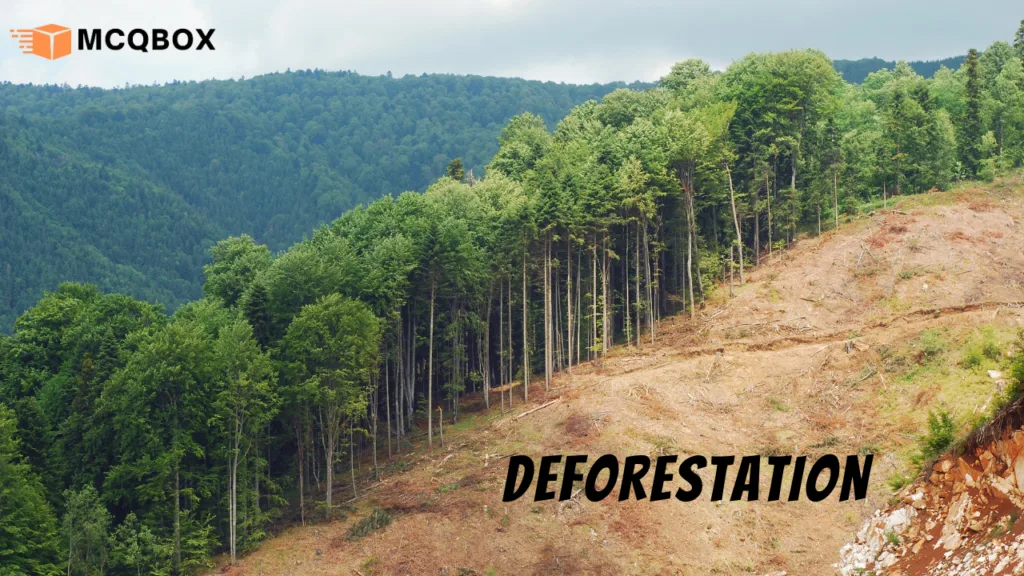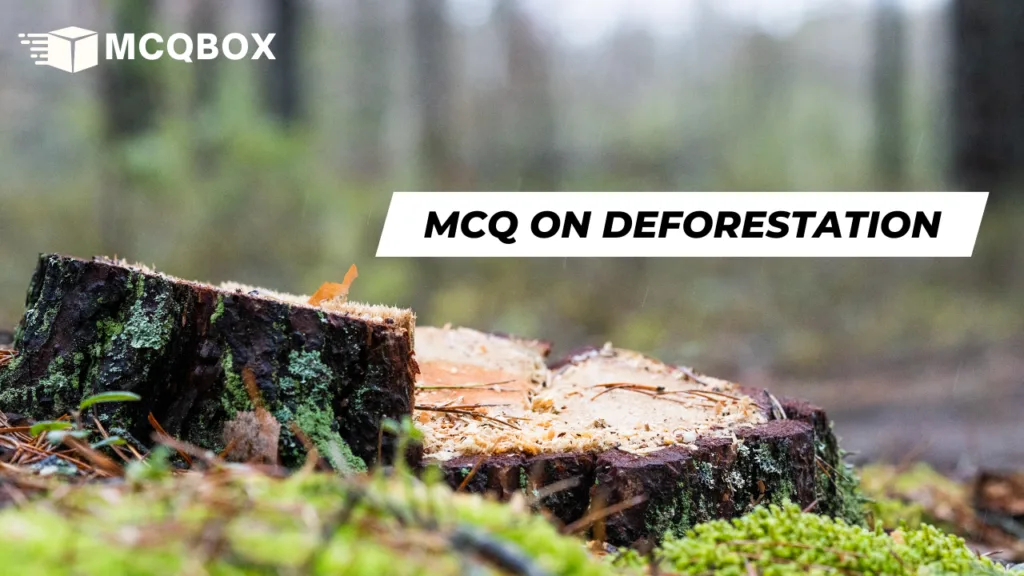
Table of Contents
What is Deforestation?
Deforestation is the process of clearing large expanses of forests, leading to the permanent removal of trees. This widespread practice is driven by various human activities and has become a significant environmental concern.
Deforestation, a term that has gained prominence in discussions about the environment, refers to the large-scale removal of forests, primarily for human activities. This practice has far-reaching consequences, impacting biodiversity, climate, and human societies. In this article, we delve into the intricacies of deforestation, exploring its causes, environmental consequences, and the efforts being made to combat this global issue.
Global Impact
The impact of deforestation is not confined to local ecosystems; it reverberates globally. From changes in weather patterns to the loss of biodiversity, the consequences are profound and affect us all.
Causes of Deforestation
Agricultural Expansion
Clearing Land for Crops
One of the primary drivers of deforestation is the expansion of agricultural activities. As the global demand for food rises, more land is cleared to cultivate crops, leading to extensive deforestation.
Livestock Grazing
Livestock farming contributes to deforestation as large areas of forests are cleared to create pasturelands. The quest for grazing space often results in the destruction of pristine ecosystems.
Logging and Timber Production
Commercial Logging
The logging industry plays a crucial role in deforestation. Large-scale logging operations, often driven by economic motives, lead to the removal of vast stretches of forests, impacting both flora and fauna.
Illegal Logging
In addition to legal logging activities, illegal logging poses a significant threat. Often driven by profit motives, illegal logging contributes to deforestation and is associated with environmental degradation.
Infrastructure Development
Roads and Highways
The expansion of infrastructure, including the construction of roads and highways, often necessitates clearing extensive forested areas. This development-driven deforestation can fragment habitats and disrupt ecosystems.
Urbanization
The rapid growth of urban areas demands more land for housing and industry. This urban sprawl leads to the conversion of forests into concrete landscapes, contributing to deforestation.
Environmental Consequences
Loss of Biodiversity
Impact on Wildlife
The removal of forests results in the loss of habitat for countless species. Deforestation threatens wildlife, leading to population declines and, in some cases, species extinction.
Effects on Ecosystems
Forests are intricate ecosystems where plants, animals, and microorganisms coexist in delicate balance. Deforestation disrupts this balance, causing cascading effects on the entire ecosystem.
Climate Change
Deforestation and Carbon Emissions
Forests act as carbon sinks, absorbing and storing carbon dioxide. When trees are cut down or burned, this stored carbon is released into the atmosphere, contributing to the greenhouse effect and climate change.
Altered Local and Global Climate Patterns
The removal of large forested areas can alter local climate patterns and even impact global weather systems. Deforestation has been linked to changes in rainfall patterns and increased occurrences of extreme weather events.
Soil Erosion and Water Cycle Disruption
Soil Quality Degradation
The roots of trees play a crucial role in maintaining soil stability. Deforestation leads to increased soil erosion, compromising the quality of soil and making it more susceptible to degradation.
Disruption of Water Flow
Forests play a vital role in regulating the water cycle. Deforestation disrupts this cycle, leading to changes in water flow, increased risk of flooding, and altered water availability for both ecosystems and human communities.
Social and Economic Impacts
Indigenous Communities
Displacement and Cultural Loss
Indigenous communities often bear the brunt of deforestation, facing displacement from their ancestral lands. The loss of forests also means a loss of cultural identity and traditional practices.
Impact on Livelihoods
Communities dependent on forests for their livelihoods, such as those engaged in sustainable harvesting or eco-tourism, suffer when forests are cleared. This economic impact extends beyond local communities to a global scale.
Economic Implications
Short-Term Gains vs. Long-Term Costs
While deforestation may provide short-term economic gains, the long-term costs are staggering. The loss of ecosystem services, such as clean water and climate regulation, poses significant economic risks.
Global Economic Connections
Deforestation is not isolated; its impact resonates globally. The interconnected nature of the global economy means that the consequences of deforestation can have widespread economic implications.
Future Outlook and Challenges
Technological Innovations
Satellite Monitoring
Technological advancements, including satellite monitoring, provide valuable tools for tracking deforestation in real-time. Satellite data helps identify areas at risk and facilitates more effective conservation efforts.
AI Solutions
Artificial intelligence (AI) is playing a growing role in addressing deforestation. AI algorithms can analyze vast datasets to predict deforestation hotspots, enabling proactive conservation strategies.
Public Awareness and Advocacy
Educational Initiatives
Raising public awareness is fundamental in the fight against deforestation. Educational initiatives help people understand the importance of forests and encourage sustainable practices.
Grassroots Movements
Grassroots movements and advocacy play a crucial role in influencing policy and driving change. When individuals and communities unite to protect forests, their collective voice becomes a powerful force against deforestation.
” Deforestation is a complex and pressing global issue with wide-ranging consequences. From environmental degradation to social and economic impacts, the urgency to address deforestation is clear. Through sustainable practices, robust policies, and international collaboration, there is hope for a future where forests are preserved for generations to come.“
MCQ on Deforestation

1. What is deforestation?
a. Planting more trees
b. Cutting down and removal of forests
c. Creating new forests
d. None of the above
Answer: b. Cutting down and removal of forests
2. Which of the following is a major driver of deforestation?
a. Forest conservation
b. Urbanization
c. Reforestation
d. Ecotourism
Answer: b. Urbanization
3. What is the primary cause of deforestation in tropical rainforests?
a. Climate change
b. Agricultural expansion
c. Forest fires
d. Wildlife preservation
Answer: b. Agricultural expansion
4. How does deforestation contribute to climate change?
a. By increasing carbon dioxide levels
b. By decreasing greenhouse gas emissions
c. By promoting rainfall
d. By cooling the Earth’s atmosphere
Answer: a. By increasing carbon dioxide levels
5. Which of the following is an impact of deforestation on biodiversity?
a. Increase in species diversity
b. Preservation of habitats
c. Loss of habitat and species
d. Enhanced ecosystem stability
Answer: c. Loss of habitat and species
6. What is the term for the practice of cutting down trees for commercial purposes without replanting?
a. Afforestation
b. Selective logging
c. Clear-cutting
d. Sustainable forestry
Answer: c. Clear-cutting
7. Which continent has experienced significant deforestation due to logging activities in the Amazon rainforest?
a. Africa
b. Asia
c. South America
d. Europe
Answer: c. South America
8. How can deforestation be mitigated?
a. Planting more trees
b. Implementing sustainable logging practices
c. Promoting reforestation
d. All of the above
Answer: d. All of the above
9. What is the role of forests in maintaining water quality?
a. Forests have no impact on water quality
b. Forests filter and purify water
c. Forests contribute to water pollution
d. Forests reduce water availability
Answer: b. Forests filter and purify water
10. What international agreements aim to address deforestation and promote sustainable forest management?
a. Paris Agreement
b. Kyoto Protocol
c. United Nations Framework Convention on Climate Change (UNFCCC)
d. All of the above
Answer: d. All of the above